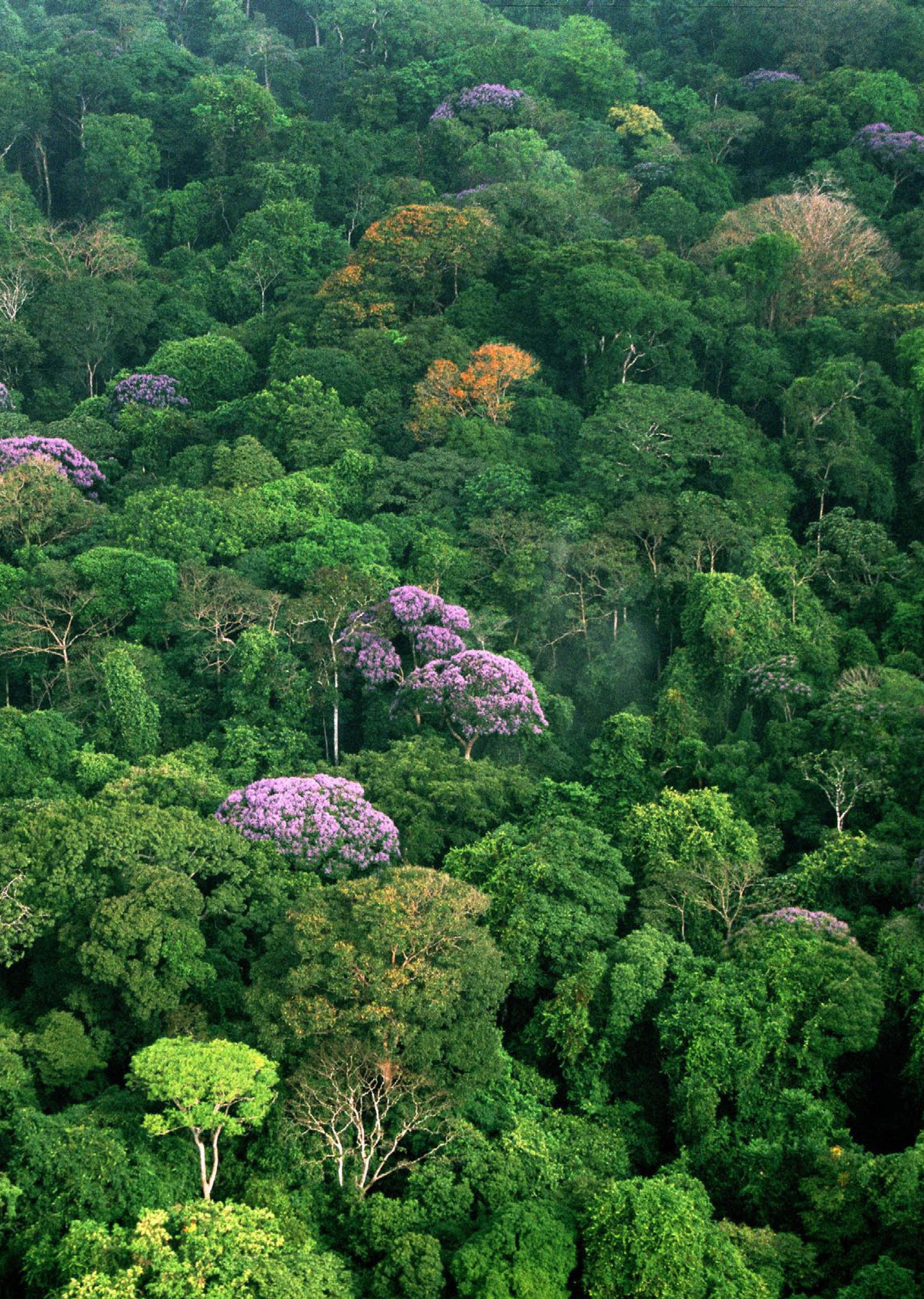The tropical forest canopy, often referred to as the “lungs of the Earth,” plays a vital role in global carbon storage and is increasingly affected by environmental drivers such as climate change. As researchers utilize NASA’s Global Ecosystem Dynamics Investigation (GEDI) technology, they are uncovering crucial insights into how these towering ecosystems sustain forest health amidst shifting climates. Recent studies show that changes in canopy height can significantly impact the storage capacity of carbon, making it essential to monitor and protect these natural carbon sinks. The forests’ interaction with factors like drought and heat underscores the urgency of understanding their dynamics in the context of a rapidly changing environment. By evaluating the vital indicators represented by the tropical forest canopy, we can better inform conservation efforts and climate-change policies that prioritize these irreplaceable ecosystems.
Exploring the upper layers of lush tropical forests reveals a complex interplay of ecological dynamics and climate influences. Known interchangeably as the tree tops, the canopy serves as an indicator of overall forest vitality and biomass. Recent advancements in technology, especially NASA’s laser-driven assessments, allow scientists to monitor variations in these elevated layers and their relation to factors like prolonged dry seasons and increased solar exposure. By analyzing the vertical structure and health of these tree crowns, researchers can gain a clearer picture of how the entire forest ecosystem functions and reacts to the adverse effects of climate fluctuations. This knowledge is critical for developing strategies aimed at conserving these biodiverse habitats that are essential for both environmental stability and carbon capture.
Understanding Tropical Forest Canopy Dynamics
The tropical forest canopy serves as a vital indicator of forest health and ecosystem productivity, revealing layers of complexity within these biodiverse environments. These upper layers of trees not only provide habitat for countless species but also play a pivotal role in carbon storage. Studies utilizing NASA’s Global Ecosystem Dynamics Investigation (GEDI) technology have allowed scientists to gain unprecedented insights into how various environmental drivers, such as climate change and topographical variations, affect canopy dynamics. By analyzing the height and health of tree canopies, researchers can assess the overall resilience of tropical forests and their ability to mitigate climate impacts.
In regions like the southern Amazon, prolonged dry seasons—a direct consequence of shifting climate patterns—have been identified as the primary driver influencing canopy height changes. These alterations pose significant threats to the intricate balance of biodiversity and carbon sequestration in these critical ecosystems. Understanding these dynamics is not merely an academic exercise; it has real-world implications for climate change mitigation strategies. Forests that achieve greater height typically exhibit higher above-ground biomass, thus contributing more effectively to carbon storage and climate regulation.
Impact of Climate Change on Tropical Forest Health
The implications of climate change are particularly pronounced in tropical forests, where environmental stressors such as extended dry seasons and elevated temperatures threaten their structure and function. Research leveraging advanced NASA technologies demonstrates that climate variables account for a substantial proportion of the variation observed in tropical forest canopy height. This finding underscores the urgent need for comprehensive assessments of forest health, as declining canopies indicate not only reduced carbon storage potential but also diminished habitat quality for numerous species reliant on these environments.
Moreover, the study found that specific environmental drivers, such as solar radiation and soil properties, substantially influence canopy dynamics. As global climate forecasts predict increasing severity and frequency of droughts, the vulnerability of these forests becomes starkly apparent. By utilizing GEDI’s innovative LiDAR measurements, researchers can track these changes in real-time, providing essential data for conservation efforts and informing policies aimed at halting tropical forest degradation.
The Role of NASA GEDI in Forest Monitoring
NASA’s Global Ecosystem Dynamics Investigation (GEDI) presents a revolutionary approach to monitoring forest ecosystems from space. Using LiDAR technology, GEDI captures detailed information on forest height, biomass, and structure, which are critical for assessing carbon storage capabilities and forest health. This technology offers insights that were previously unattainable, allowing scientists to evaluate vast areas of tropical forests across continents, such as Africa and South America, all from a single platform positioned on the International Space Station.
With GEDI, researchers are equipped to study the intricate relationships between forest canopies and essential environmental factors. The ability to measure canopy height variance in response to climate change stresses enhances our understanding of how these forests adapt—or fail to adapt—over time. This knowledge is crucial for developing targeted conservation strategies and policies that prioritize the preservation of these vital ecosystems, ensuring they continue to function as carbon sinks amidst our changing climate.
Environmental Drivers of Forest Canopy Height
A comprehensive understanding of the environmental drivers that affect tropical forest canopy height is paramount in the wake of escalating climate change challenges. The NASA GEDI study identified critical variables such as elevation, dry season duration, and solar radiation as major influences on the vertical structure of forest canopies. These findings highlight the interconnectedness of ecological parameters and confirm the necessity of integrating environmental science into forest management strategies.
By pinpointing the primary factors contributing to canopy height changes, scientists can better predict how tropical forests will respond to continual environmental stress. For instance, in relatively moist regions like the central Amazon, elevation becomes a significant determinant of canopy height compared to drier areas where prolonged dry seasons pose more severe threats. Such differentiation is essential for understanding not just the health of specific forest regions but also their overall ecological service capabilities.
Tropical Forests: Biodiversity Hotspots and Carbon Reservoirs
Tropical forests are more than just carbon reservoirs; they are biodiversity hotspots that harbor an astonishing variety of life. These ecosystems are home to over half of the world’s terrestrial species, and their well-being directly impacts global biodiversity. As findings from the GEDI study illustrate, understanding how climate change influences these forests is vital for their conservation and for maintaining the services they provide, including carbon sequestration, which is crucial in our battle against climate change.
The rich biodiversity contained within tropical forests not only enhances ecosystem resilience but also provides essential resources for local communities. However, as climate change threatens forest health and alters canopy structures, it exacerbates the risks faced by countless species. Research that focuses on both biodiversity and carbon storage will ultimately guide conservation policies aimed at protecting these invaluable ecosystems while ensuring their role in climate regulation remains intact.
Importance of Protecting Vulnerable Forest Areas
As scientists unveil the vulnerabilities of tropical forests through advanced monitoring techniques, the need for targeted conservation becomes increasingly urgent. With evidenced findings from NASA’s GEDI indicating that regions like the southern Amazon are particularly susceptible to climate fluctuations, prioritizing these vulnerable areas is crucial for effective environmental management. The wisdom of focusing conservation efforts on high-risk areas where canopy degradation is occurring can bolster efforts to mitigate the effects of climate change.
Protecting tropical forests is not merely an ecological necessity; it is a socio-economic imperative as well. The livelihoods of countless communities depend on the health of these forests, which serve as sources of food, medicine, and income. By investing in the protection of tropical forests and enhancing our understanding of the environmental drivers impacting them, we can safeguard both biodiversity and the essential ecosystem services they provide now and in the future.
Tropical Forests and Climate Policy Development
Research findings surrounding tropical forests and their response to climate change have profound implications for climate policy development. With the evidence provided by NASA’s GEDI study showing the direct correlation between canopy health and environmental drivers, policymakers are better equipped to enact measures that protect these vital ecosystems. Integrating scientific data into legislation can lead to more informed decisions regarding land use and forest conservation strategies aimed at mitigating climate impacts.
As nations strive to meet climate goals, the role of tropical forests as carbon sinks cannot be overstated. Policies that promote the preservation and restoration of these forests are essential for achieving global carbon reduction targets. Moreover, by allocating resources towards protecting vulnerable areas highlighted by research, countries can enhance their climate resilience and ensure sustainable development that balances ecological conservation with economic needs.
Future Directions for Tropical Forest Research
The future of tropical forest research is crucial in the context of rising climate challenges. As demonstrated by NASA’s GEDI technology, ongoing studies will need to focus on comprehensive assessments that go beyond primary forests to include damaged or secondary woodlands. This expanded scope will provide a fuller picture of how forests as a whole are reacting to environmental stressors and enabling better predictions of their future health.
Furthermore, interdisciplinary collaboration across ecological, climatic, and technological fields will enhance the depth of research on tropical forests impacts from climate change. By prioritizing comprehensive data collection and analysis, researchers can inform broader conservation strategies, guiding policy and fostering international cooperation to protect these irreplaceable ecosystems and curb the escalating impacts posed by global climate change.
Frequently Asked Questions
How does climate change affect the tropical forest canopy?
Climate change significantly impacts the tropical forest canopy by altering factors such as temperature, precipitation, and increased frequency of droughts. These environmental changes can lead to reduced canopy height and health, ultimately affecting carbon storage capabilities of these forests.
What role does the tropical forest canopy play in carbon storage?
The tropical forest canopy plays a crucial role in carbon storage as taller canopies are associated with greater above-ground biomass. By sequestering carbon, these canopies contribute significantly to mitigating climate change effects.
How does NASA GEDI technology enhance our understanding of tropical forest canopy health?
NASA’s Global Ecosystem Dynamics Investigation (GEDI) employs LiDAR technology from the International Space Station to offer detailed insights into tropical forest canopy height and structure. This technology allows researchers to assess the health of forests and monitor the impacts of climate change on these vital ecosystems.
What are the main environmental drivers affecting tropical forest canopy height?
Key environmental drivers affecting tropical forest canopy height include climate variables like temperature and precipitation, topography, and soil properties. Recent studies indicate that elevation and seasonal dryness are significant factors in determining canopy height.
Why is understanding tropical forest canopy health important in the context of climate change?
Understanding the health of the tropical forest canopy is vital as it informs about carbon sequestration potential and the overall productivity of these ecosystems. This knowledge helps policymakers and conservationists develop effective strategies to protect these forests from climate change impacts.
What findings did scientists discover about the vulnerability of the southern Amazon’s tropical forest canopy?
Scientists found that the tropical forest canopy in the southern Amazon is particularly vulnerable to climate change due to increasingly prolonged dry seasons, which are essential drivers in determining canopy height in that region.
How can monitoring forest canopy height with GEDI help in conservation efforts?
Monitoring forest canopy height with GEDI provides critical data that can help identify vulnerable areas within tropical forests. This information is essential for developing targeted conservation strategies and informing climate change policies.
What future directions are researchers considering for studying tropical forest canopies?
Researchers aim to expand their investigations beyond primary forests to include various forest and woodland areas globally. This broadened focus is intended to enhance understanding of forest health and inform climate change mitigation efforts more effectively.
| Key Points | Details |
|---|---|
| Study Focus | Impact of climate change on tropical forest canopy height. |
| Research Tool | NASA’s GEDI, a LiDAR instrument, used for mapping canopy height globally. |
| Importance of Canopy Height | Taller canopies indicate high carbon storage and ecosystem productivity. |
| Climate Effects | Dry season length and elevation significantly affect canopy height. |
| Geographical Impact | Southern Amazon faces vulnerabilities due to prolonged dry seasons. |
| Future Research Goals | Expanding studies beyond primary forests to influence climate policy. |
Summary
The tropical forest canopy plays a crucial role in maintaining the health of our planet’s ecosystems. This critical layer of mature trees is vital for carbon storage, biodiversity, and climate regulation. Recent research using NASA’s GEDI technology highlights the threats posed by climate change, revealing that weather variations significantly affect canopy height across regions. Understanding these dynamics is essential not only for conservation efforts but also for shaping effective climate policies. By protecting tropical forest canopies, we can safeguard biodiversity and enhance carbon sequestration, further mitigating the impacts of climate change.



